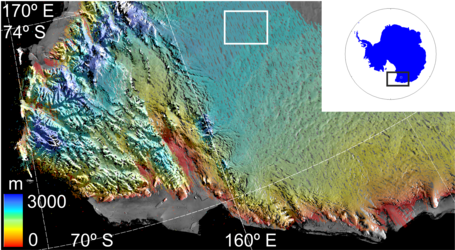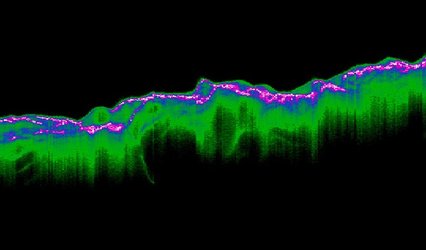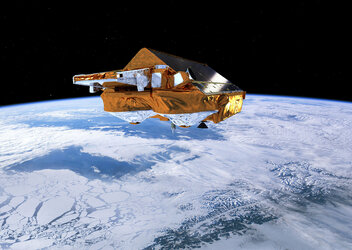CryoSat detects hidden Antarctic pattern
Near the centre of Antarctica, measurements from CryoSat show an unusual pattern in the ice sheet’s elevation. Scientists have now found the reason for this pattern – and the discovery is leading to even more accurate measurements from ESA’s ice mission.
CryoSat carries a radar altimeter that can ‘see’ through clouds and in the dark, providing continuous measurements over areas like central Antarctica that are prone to bad weather and long periods of darkness.
The radar measures the surface height variation of ice by timing the interval between the transmission and reception of very short radar pulses as the satellite orbits Earth.
CryoSat collects data over Antarctica while passing on northbound and southbound orbits. But the data show an unusual pattern of height differences where these orbit cross, radiating from the South Pole.

“When this static pattern in the CryoSat measurements emerged, alarm bells started to ring,” said Tom Armitage from University College London, who led the study.
“At first, we thought that there could be an issue with the satellite itself, such as a miscalculation of the altitude, a timing error or a problem with one of the corrections we apply to the measurements.”
After eliminating the possibility of these errors through careful experimentation, scientists discovered that the pattern was caused by the way the satellite signal is scattered from the ice sheet surface.
Antarctica has some of the strongest and most persistent winds on Earth, which leave permanent erosional and depositional features on the surface and in the snow pack. The scientists found that that these wind-driven features modify CryoSat’s radar measurements in such a way as to produce the pattern that has been detected.
“The pattern is not an ‘error’, but an artefact arising from the interaction of the polarisation of CryoSat’s antenna with the structure of the ice surface induced by wind,” said Tommaso Parrinello, CryoSat Mission Manager.

It has long been known that wind-driven directional properties of the ice sheet surface can affect the signal received by radar altimeters, but has never been seen so clearly. The most striking feature of the pattern – the diamond ring pattern close to the pole – had not been seen by past altimeter missions because they did not fly far enough south.
Since the pattern appears to be stable over time, the data can easily be corrected, ensuring that CryoSat’s past and future measurements of Antarctica are precise. The discovery also helps scientists better understand the interaction between radar waves and ice sheet surfaces.















 Germany
Germany
 Austria
Austria
 Belgium
Belgium
 Denmark
Denmark
 Spain
Spain
 Estonia
Estonia
 Finland
Finland
 France
France
 Greece
Greece
 Hungary
Hungary
 Ireland
Ireland
 Italy
Italy
 Luxembourg
Luxembourg
 Norway
Norway
 The Netherlands
The Netherlands
 Poland
Poland
 Portugal
Portugal
 Czechia
Czechia
 Romania
Romania
 United Kingdom
United Kingdom
 Slovenia
Slovenia
 Sweden
Sweden
 Switzerland
Switzerland
































